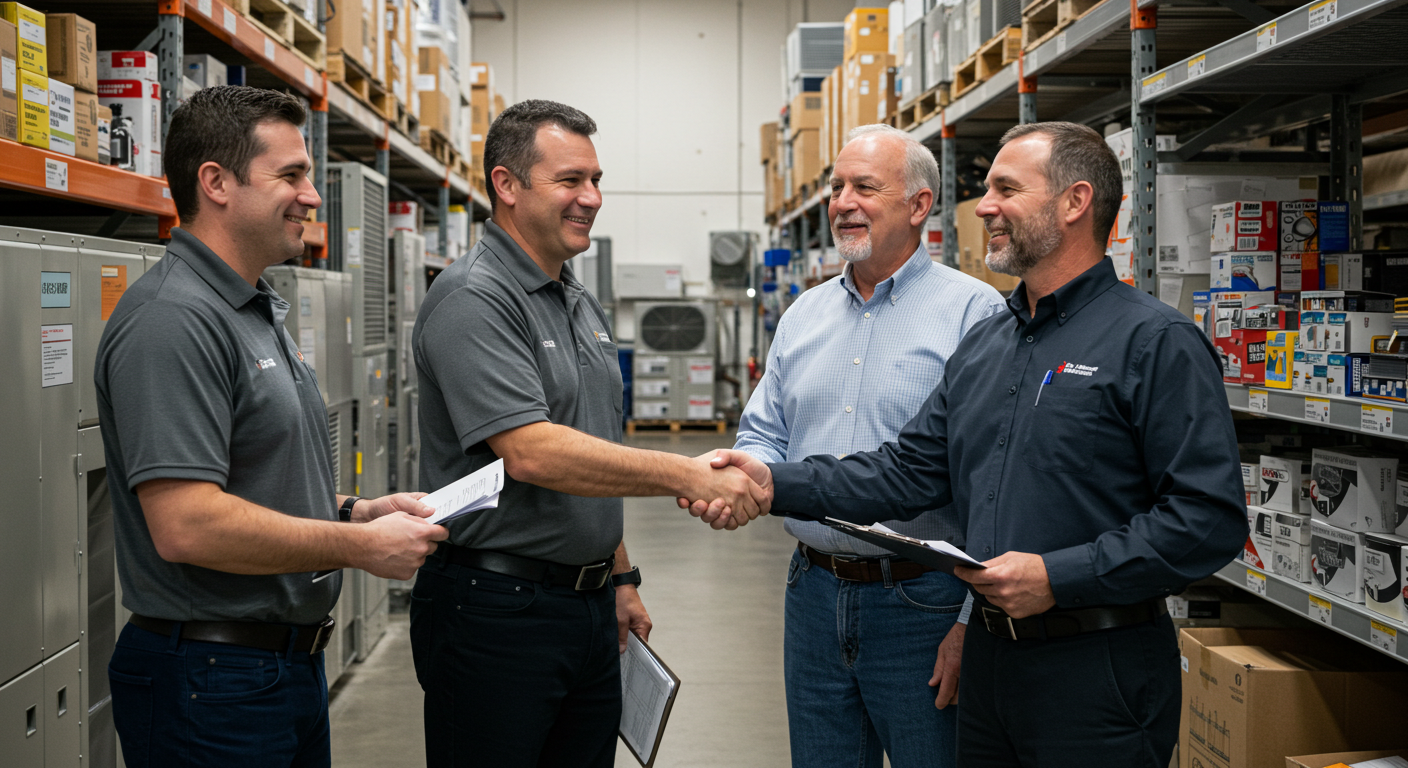Leveraging Supplier Relationships for Better HVAC Deals
In the rapidly evolving HVAC industry, building strong supplier relationships is more crucial than ever. As an experienced contractor, you know that these partnerships can be the key to unlocking better deals and boosting your bottom line. But how exactly can you maximize these relationships for the best results? Let’s dive in and explore how you can leverage supplier partnerships to secure more favorable HVAC procurement deals.
Understanding the Importance of Supplier-Contractor Relationships
Strong supplier relationships are the backbone of successful HVAC businesses. However, recent reports indicate that 77% of distributors have experienced stagnant or worsening supplier support, with over 80% citing these challenges as reasons for reduced sales and profitability. This underscores the importance of nurturing your supplier connections to ensure you remain competitive in an increasingly demanding market.
Effective Negotiation Tactics with HVAC Suppliers
Strategic alignment with suppliers can lead to significant cost savings, especially for contractors with substantial purchase volumes. By negotiating effectively, you can achieve savings between 10-15% on competitive bids. Beyond just price, consider negotiating non-price benefits like having suppliers manage your inventory, which can enhance efficiency and drive down costs.
Embracing Efficiency Trends in HVAC Equipment
The HVAC market is shifting towards high-efficiency systems, driven by regulatory mandates and consumer demand for energy efficiency. Products like the Friedrich Three-Ton Universal Heat Pump are gaining popularity for their efficiency and compliance with new regulations. Leveraging your supplier relationships can grant you better access to these high-efficiency products, ensuring you stay ahead of the curve.
Integrating Technology for Better Supplier Collaboration
To optimize your supplier interactions, consider adopting advanced procurement technologies. These tools offer real-time data tracking, reducing inefficiencies and fostering transparency. With digital tools, you can optimize orders, monitor inventory, and track supplier performance, ultimately building stronger, long-term partnerships.
- Enhance supplier relationships to improve HVAC supply chain deals.
- Adopt strategic negotiation tactics for cost savings.
- Embrace technology to streamline supplier interactions.
- Stay updated with efficiency trends in HVAC systems.
- Foster trust and collaboration with reliable suppliers.
Conclusion: Building Trust with Your HVAC Suppliers
In an ever-changing industry, leveraging supplier relationships can give you a competitive edge. By focusing on collaboration, negotiation, and technology integration, you can optimize your HVAC supply chain and secure better deals. Remember, building trust with your suppliers is not just beneficial—it’s essential for long-term success.
Ready to strengthen your supplier relationships for better HVAC deals? Start today!
FAQ: Strengthening HVAC Supplier Relationships
How can I improve my HVAC supplier relationships?
Focus on open communication, negotiation strategies, and technology integration to foster stronger connections.
What are the benefits of leveraging supplier partnerships in HVAC?
Supplier partnerships can lead to cost savings, better equipment access, and improved supply chain efficiency.
How do I negotiate better deals with HVAC suppliers?
Align your business goals with your suppliers, negotiate both price and non-price benefits, and leverage your purchase volume.
Why is technology important in supplier collaboration?
Technology streamlines interactions, provides real-time data, and enhances transparency, leading to better supplier partnerships.
What trends should I watch in HVAC procurement?
Stay informed about high-efficiency systems, regulatory changes, and environmentally friendly refrigerants to stay competitive.


